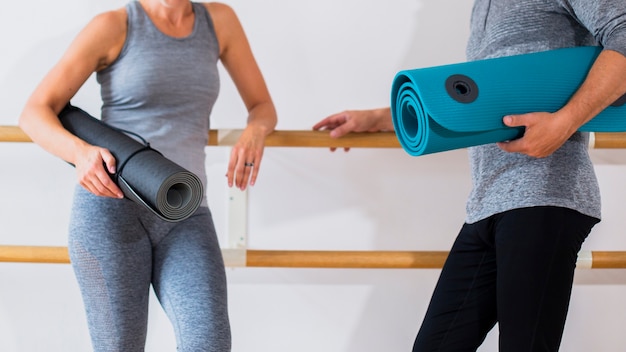
Fascia Training is a new trend in the fitness world that shifts the focus from just muscles to the connective tissues around them. But before diving into fascia exercises, let’s first understand what fascia is.
Fascia is the connective tissue that runs throughout your entire body, wrapping around your muscles, organs, and bones. It’s actually the largest sensory organ in your body, even covering more surface area than your skin. Healthy fascia is flexible and resistant to injury. However, when it’s tight or restricted, it can cause pain and limit your movement, affecting your daily life and workouts.
A good fascia workout program aims to boost both your strength and flexibility while reducing injuries and discomfort caused by tight fascia. You might notice people at the gym using foam rollers or rubber balls to work on their fascia. While that helps, there’s more to fascia exercises.
There are four main methods to exercise your fascia, and a balanced program should include elements of all four.
One popular method is yoga, which involves full-body movements that stretch your fascia. Simple yoga poses can be done at home to stretch your muscles and fascia. If yoga isn’t your thing, consider Pilates. Pilates, similar to yoga, focuses on whole-body movements but it’s more core-focused and offers a more challenging workout.
For a gentler approach, Tai Chi is another great option for fascia stretching.
Fascia also needs to stretch and then spring back, much like a slinky. Dynamic exercises that involve movements like skipping, hopping, or jumping can strengthen the fascia’s ability to return to its normal length. Adding plyometric exercises such as high knees, butt kicks, and speed skaters to your warm-up routine can help keep your fascia flexible and prevent painful conditions like plantar fasciitis.
Proprioception, which is your awareness of where your body is in space, is also important. Strengthening this helps your fascia support better movement coordination. Proprioception exercises should be done slowly and with control, challenging your balance and stability.
Lastly, there’s fascial release, often known as foam rolling or using other tools for myofascial release. These tools help stimulate the lymph and fluid in your fascia, allowing for fluid exchange and removal of metabolic waste. Foam rolling should be done slowly. For areas you can’t reach, consider getting a myofascial massage from a therapist.
Everyone’s body is different, so it’s important not to compare yourself to others. Focus on what feels right for you. Staying hydrated is crucial for keeping your fascia healthy. No matter how many exercises you do, without enough water, your fascia can become restricted.
Rest and recovery are also important. They allow your fascia and muscles to repair and strengthen, making you more flexible and less prone to injury. Nutrition plays a role too; a diet low in inflammatory foods, and rich in vitamin C and collagen, supports connective tissue health.
Fascia exercises offer countless benefits, helping you move better and feel less pain, both in and out of the gym. Once you start experiencing these benefits, you won’t want to stop.